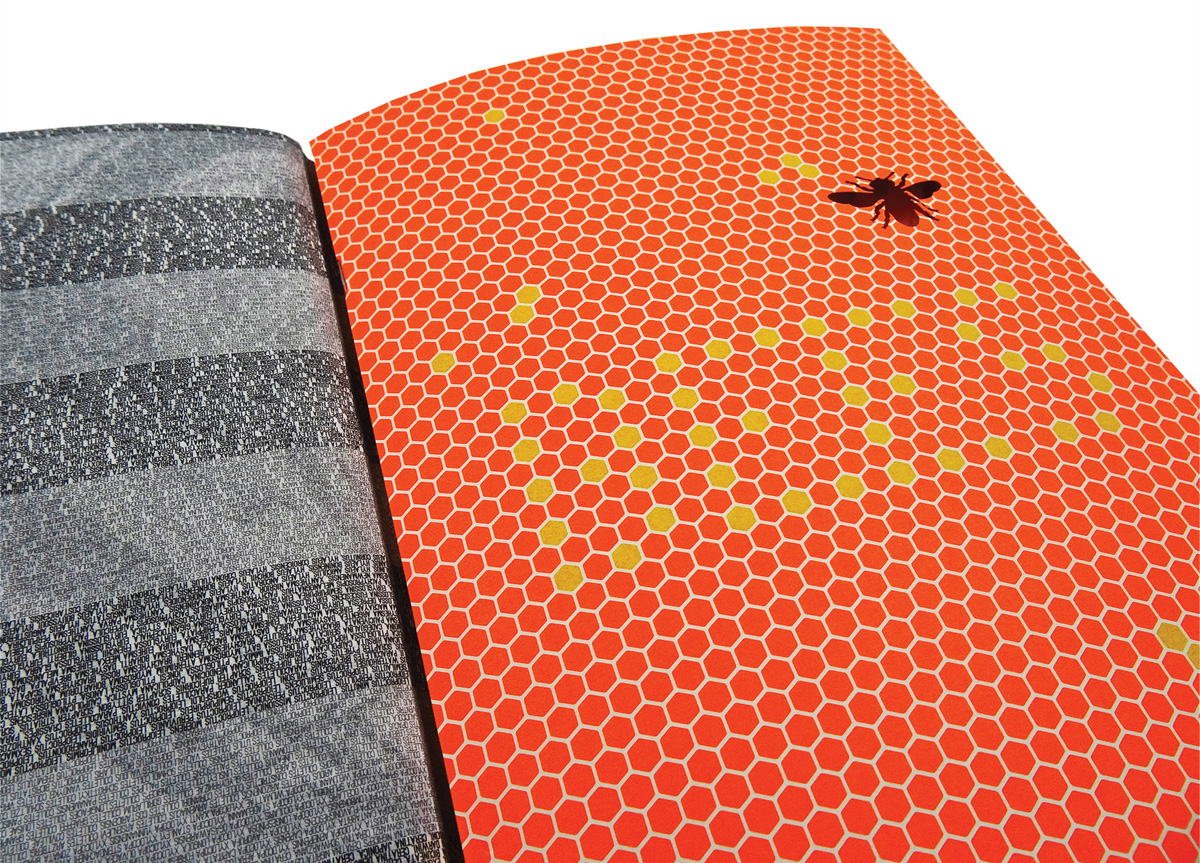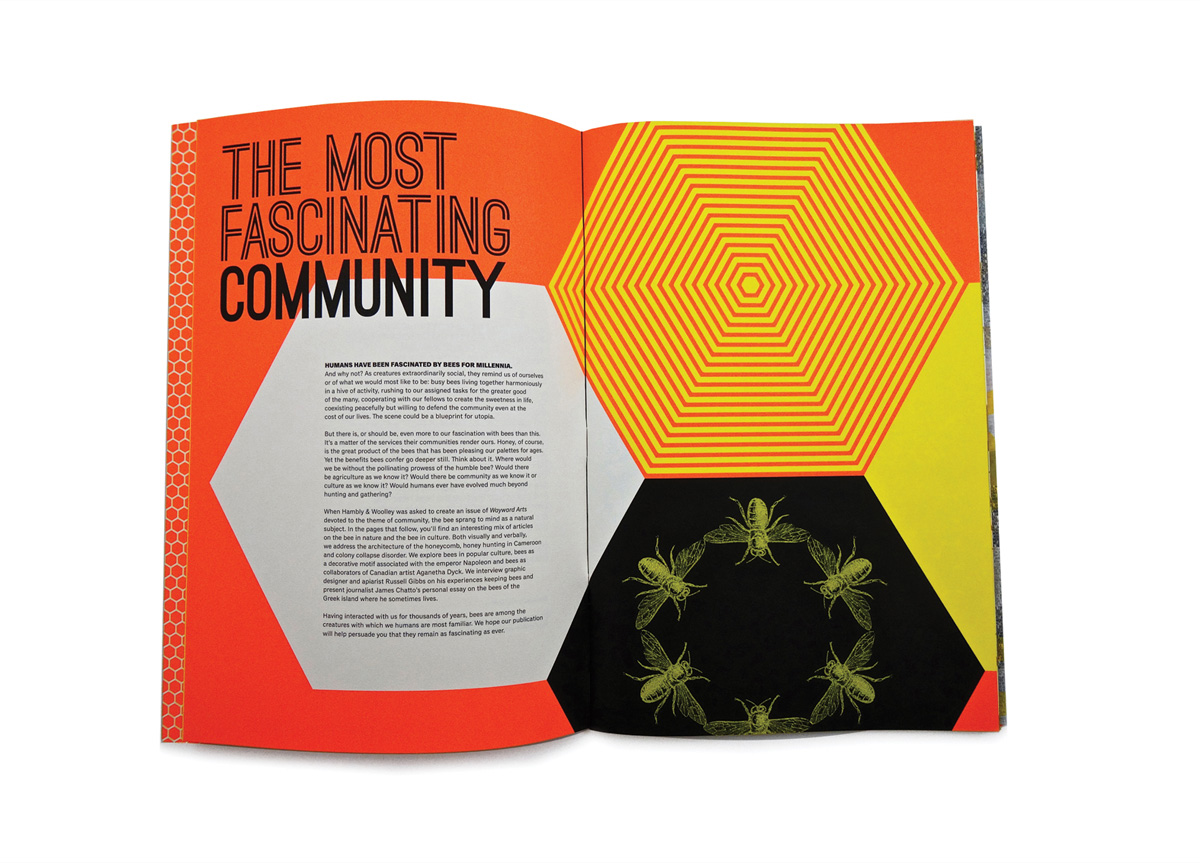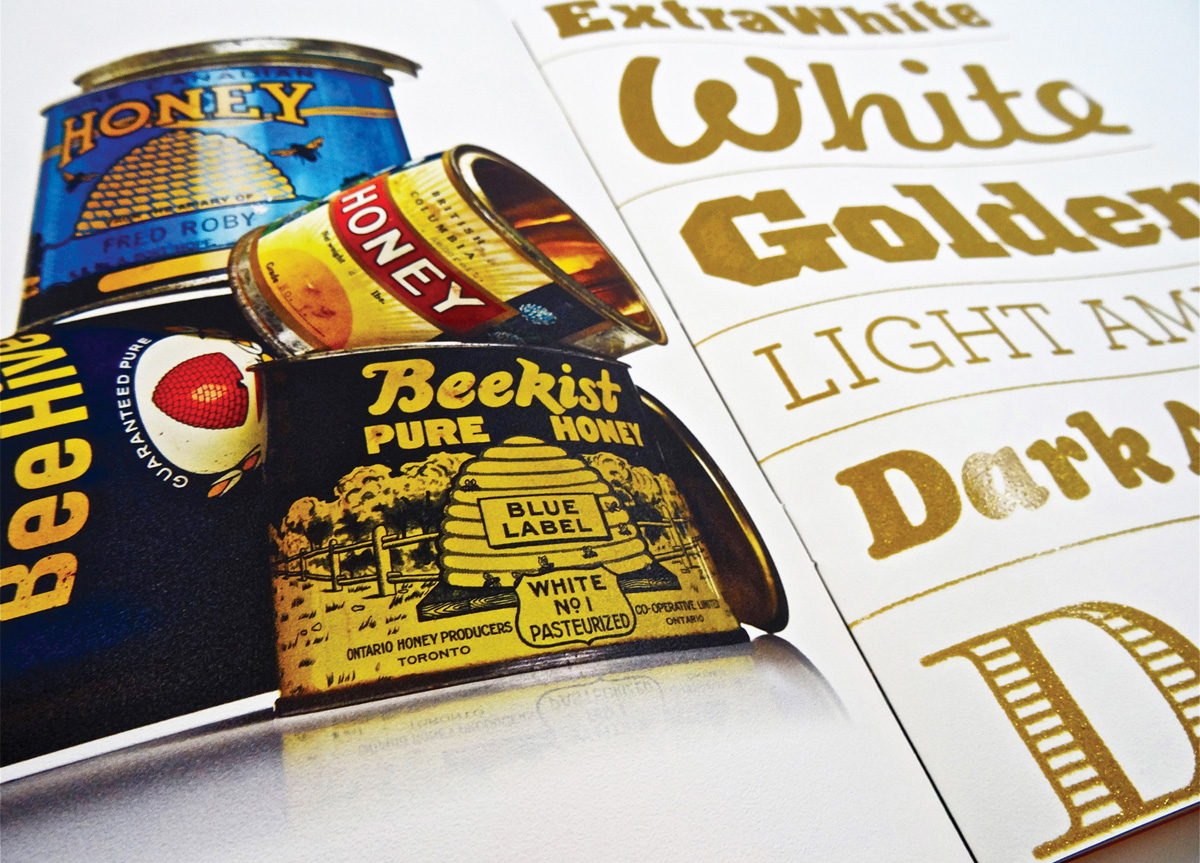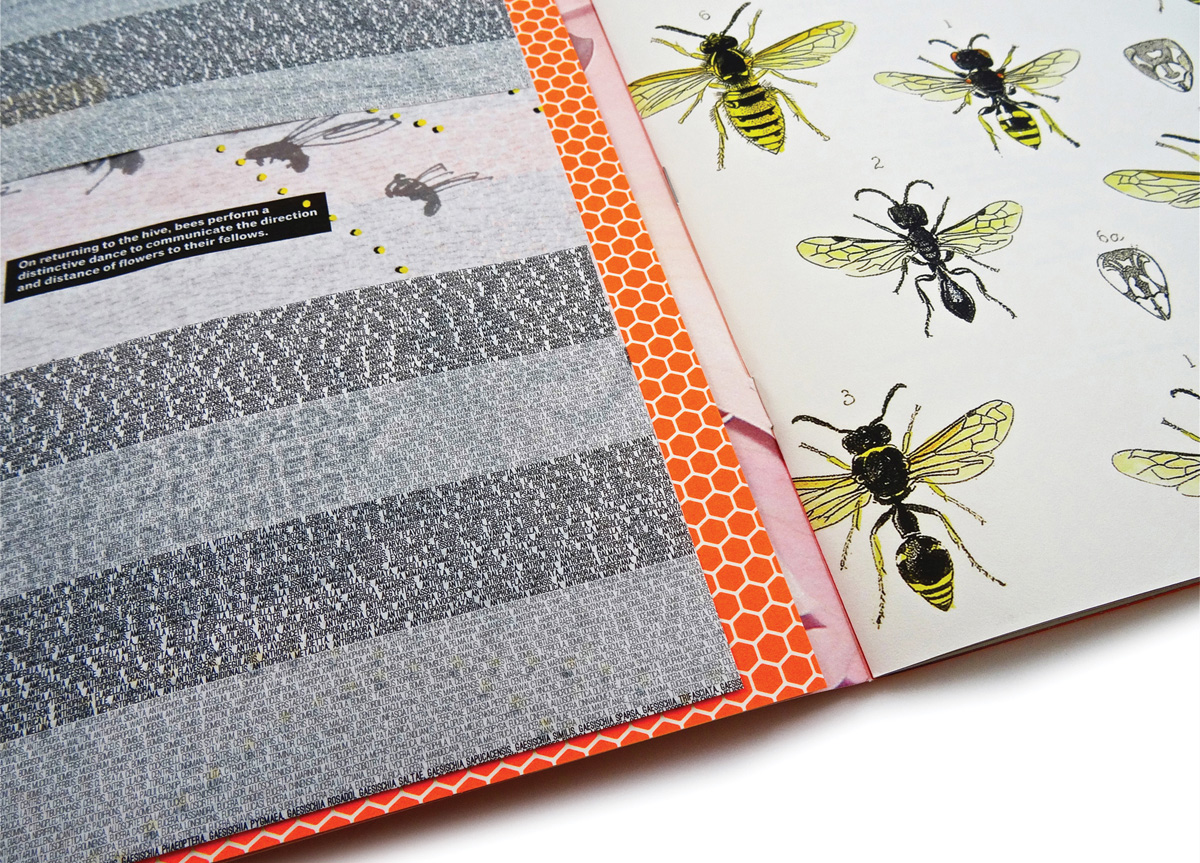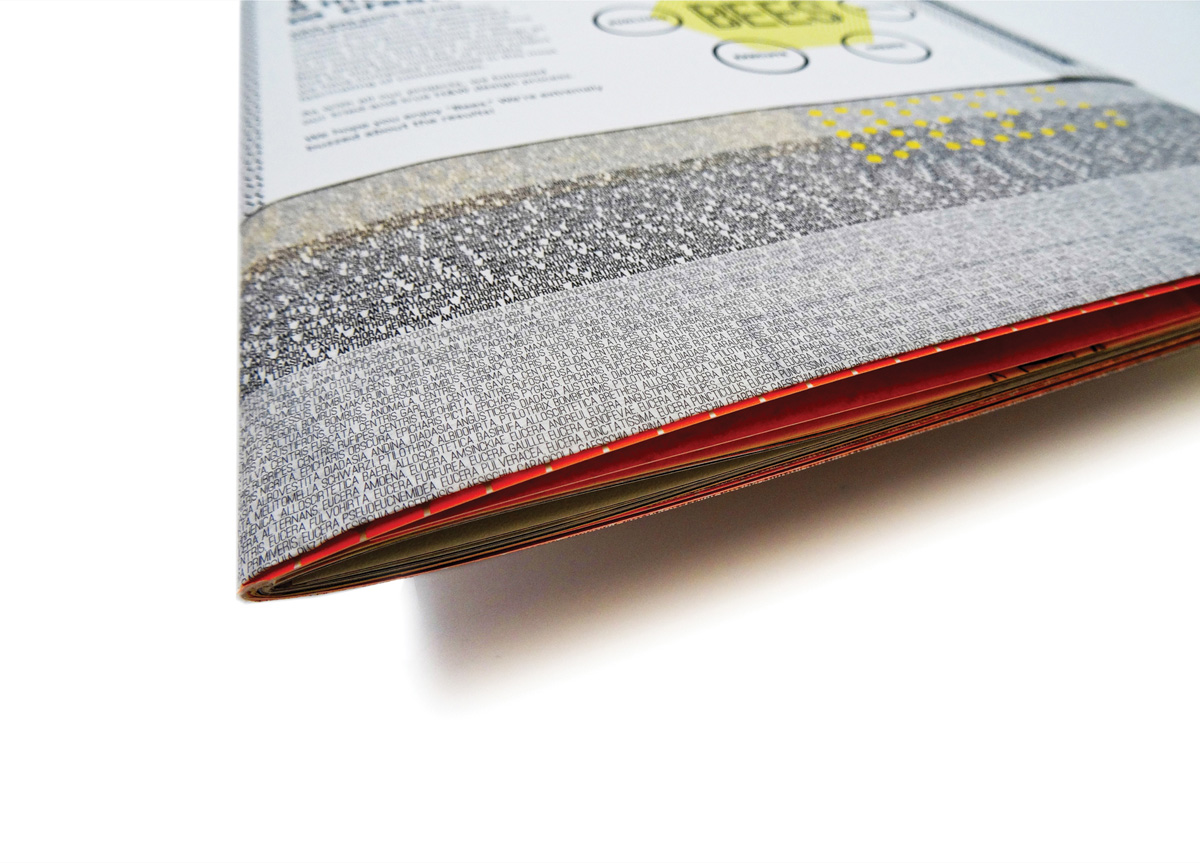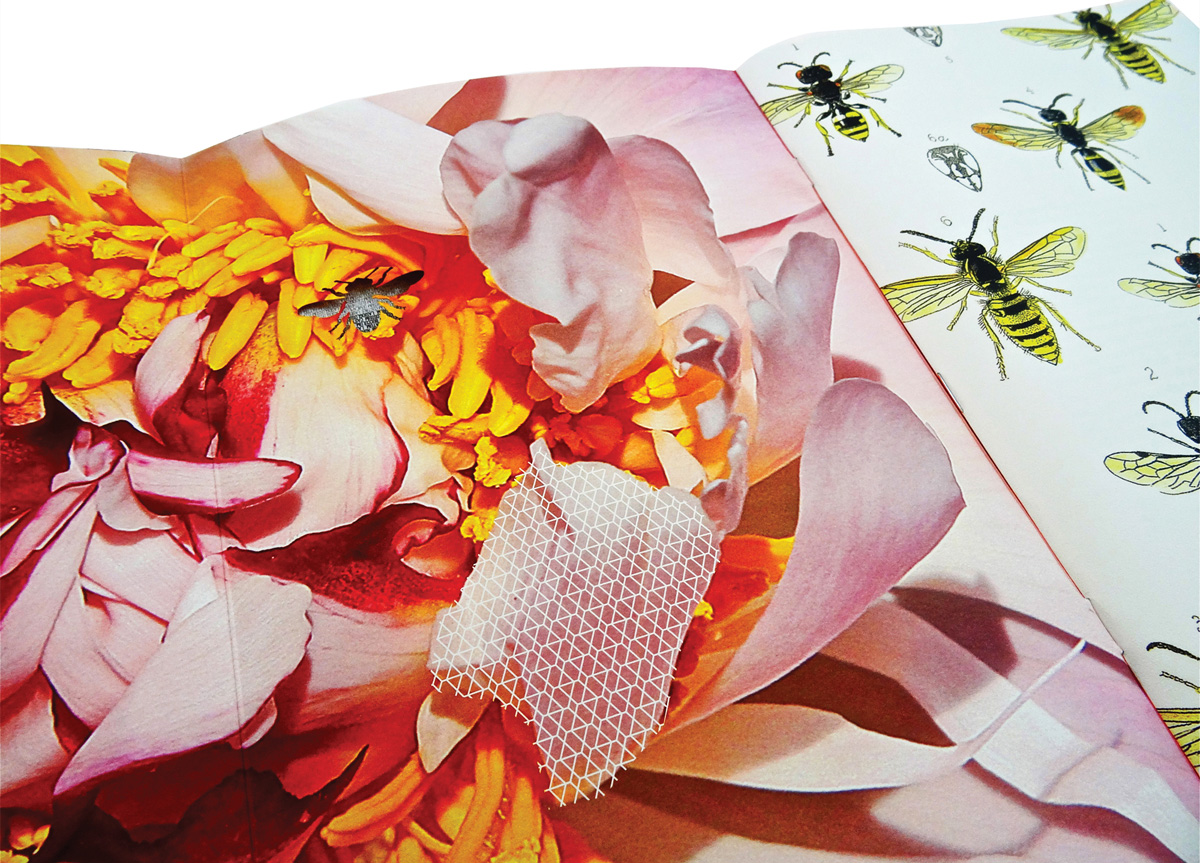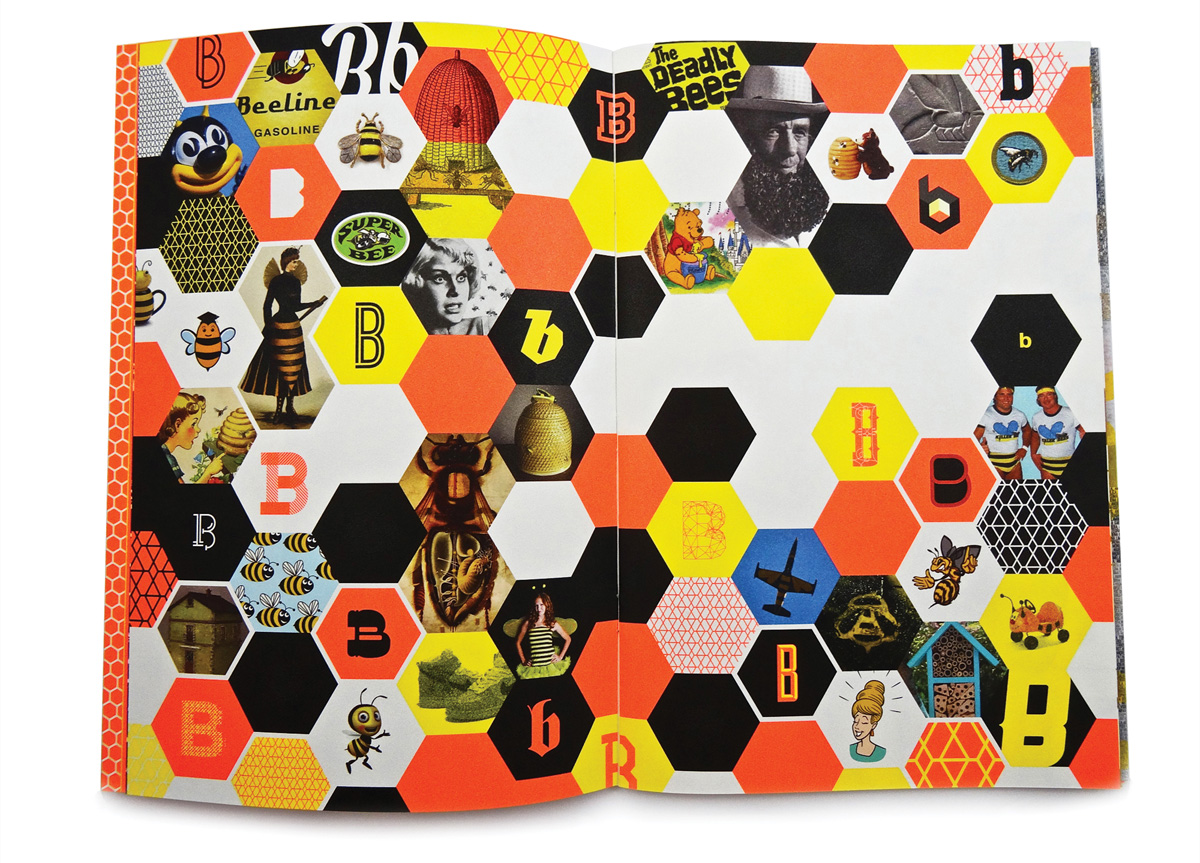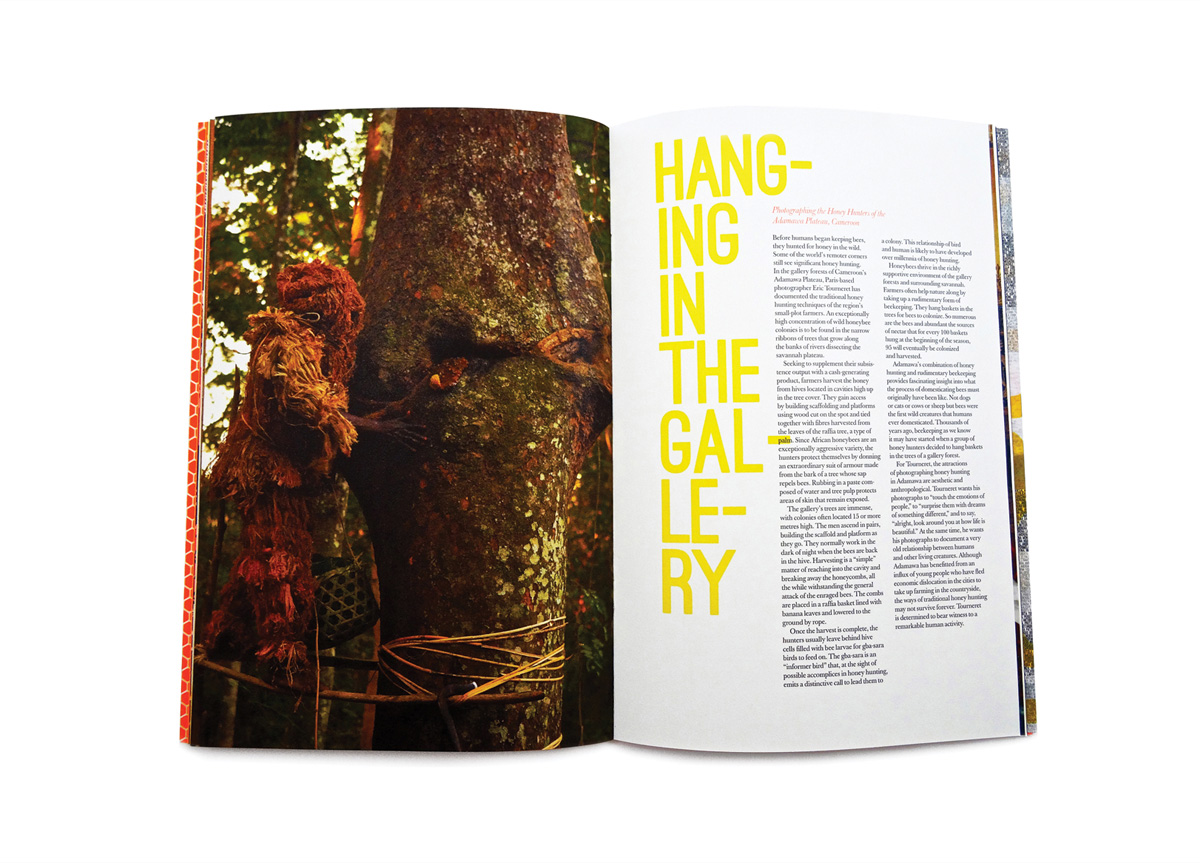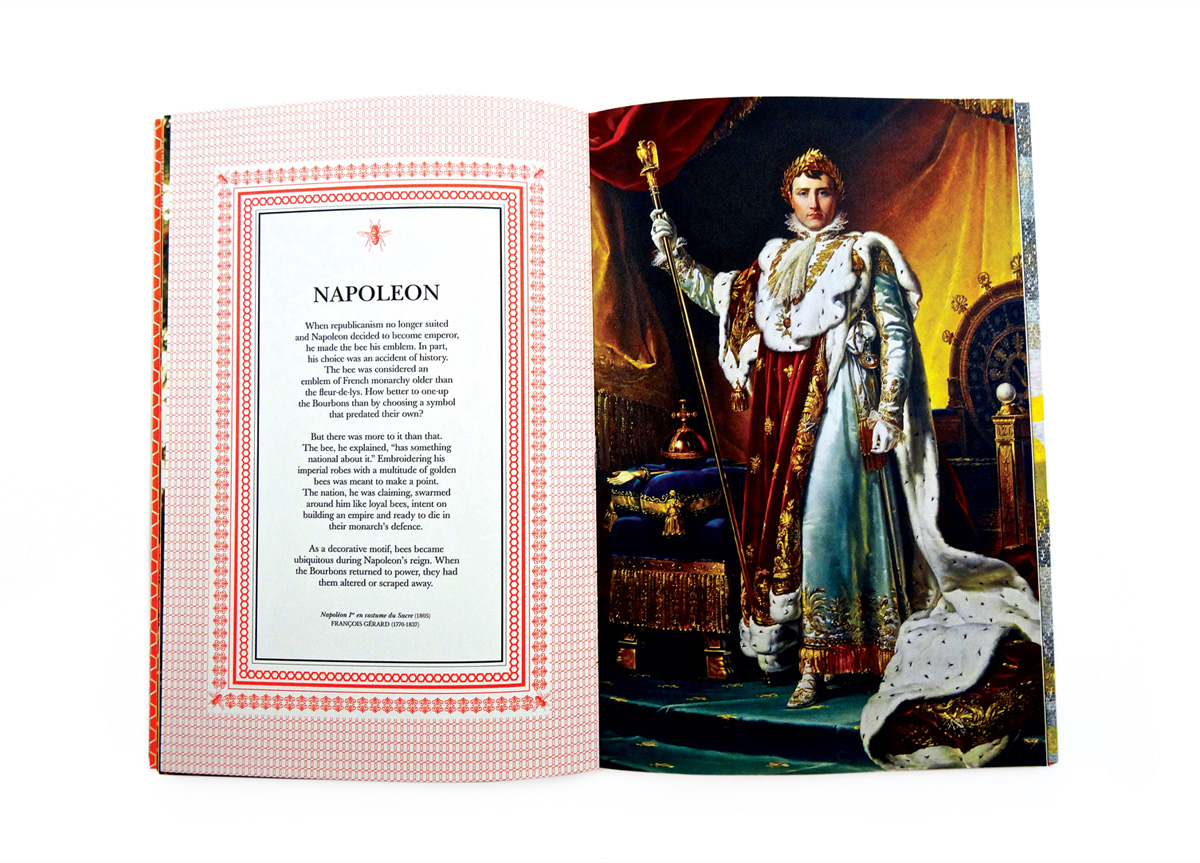CLIENT
Wayward Arts is a monthly magazine curated by a different award winning design studio each issue, working with the finest print craftsmen at Flash Reproductions to produce the magazine of their collective dreams.
BRIEF
Each issue is developed by a different award-winning Canadian design studio who get to work with the finest print craftsmen and the finest paper to produce the magazine of their dreams.
APPROACH
The main challenge with the Bees issue was printing and folding textured paper without any wear and tear. The beautiful design spoke for itself.
PRODUCTION LESSONS
What we thought could be folded automatically had to be folded by hand. This required extensive—but ultimately rewarding—work in the finishing process.
We’ve seen any number of cliché-ridden designs that involve bees. This is not one of them. Yes, there is use of the requisite hexagon and florescent yellow plays a key role, yet page after page proves to be much like bees themselves: hard-working, and creating delightfully sweet content. Photos, art, text, color, typography, inks, paper, printing, come together in a harmonious blend not unlike the flavors found by combining clover and Black Locust in a lip-smacking Canadian honey. Details include a cover-wrap that doubles as a poster, articles on architecture, Napoleon, and current aboriginal apiary techniques, and a hive full of bee-related images. This piece had every juror buzzing. — Marc EnglishThe last time I had a run in with a bee, my heart stopped and had to be restarted by paramedics. This time, almost! A marvelous design romp through styles and materials, these bees were magnetic and had all the jurors returning to the hive over and over, each time with new discoveries. — Stephen DoyleEach spread is richly patterned and diverse, giving a vibrant and exciting feel. — John EarlesBees have been on my mind lately as I mow acres and acres of grass and clover on the tractor, hoping they buzz away before the blades…They are amazing creatures and given their due in this publication, helping to raise our awareness as their populations decline due more likely to pesticides and less to my tractor. — Jim Sherraden



